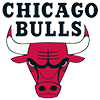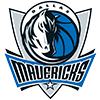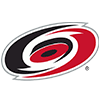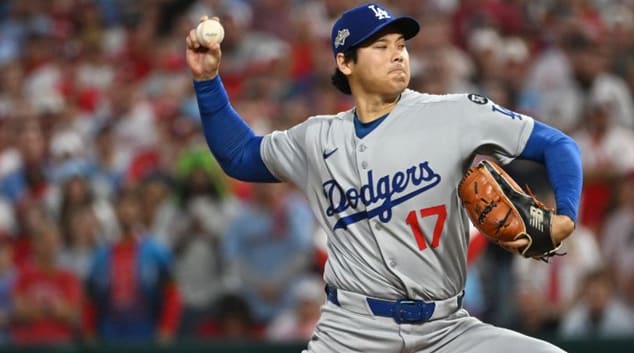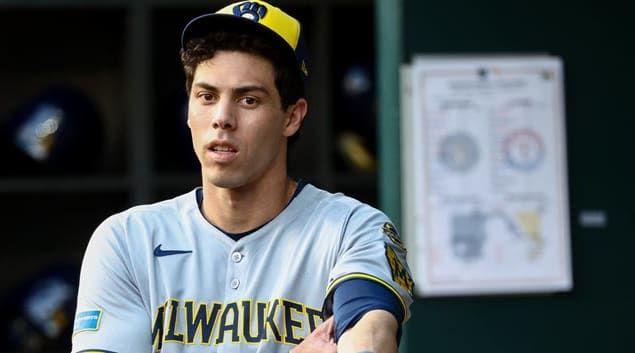Simply put, the thing that makes this an unappealing draft class from a fantasy perspective is that pitching prospects account for a higher percentage of the top fantasy talent than in typical years. It is early, but in my preliminary rankings, there are 10 pitchers in the top 20, eight pitchers in the top 16, five pitchers in the top 11 and three pitchers in the top seven. In last year's class, for instance, the top five fantasy prospects and seven of the top 10 were hitters.
It is a good year to try to get an impact arm, but not a good year to get a high-upside bat with any semblance of a high floor, although I profiled the top 15 hitters in this class last week, nonetheless. Here is a breakdown of the top 10 pitching prospects in this class for dynasty league purposes. Each pitcher's potentially plus-plus and plus pitches are noted, along with their projected draft range and likely placement in the top 400 prospect rankings.
1. Kyle Wright, RHP, Vanderbilt
Age: 21
Potentially plus pitches: Fastball, curveball, slider, changeup
Draft range: 1-4
Likely placement in the top 400: 40-60
A dominant run to close out Vanderbilt's regular season cemented Wright as the favorite to go No. 1 overall in this year's draft. The 21-year-old righty notched a 1.16 ERA, 0.54 WHIP and 62:8 K:BB in the final 46.2 innings before the NCAA Tournament. He boasts a plus low-to-mid-90s fastball with good life, a
Simply put, the thing that makes this an unappealing draft class from a fantasy perspective is that pitching prospects account for a higher percentage of the top fantasy talent than in typical years. It is early, but in my preliminary rankings, there are 10 pitchers in the top 20, eight pitchers in the top 16, five pitchers in the top 11 and three pitchers in the top seven. In last year's class, for instance, the top five fantasy prospects and seven of the top 10 were hitters.
It is a good year to try to get an impact arm, but not a good year to get a high-upside bat with any semblance of a high floor, although I profiled the top 15 hitters in this class last week, nonetheless. Here is a breakdown of the top 10 pitching prospects in this class for dynasty league purposes. Each pitcher's potentially plus-plus and plus pitches are noted, along with their projected draft range and likely placement in the top 400 prospect rankings.
1. Kyle Wright, RHP, Vanderbilt
Age: 21
Potentially plus pitches: Fastball, curveball, slider, changeup
Draft range: 1-4
Likely placement in the top 400: 40-60
A dominant run to close out Vanderbilt's regular season cemented Wright as the favorite to go No. 1 overall in this year's draft. The 21-year-old righty notched a 1.16 ERA, 0.54 WHIP and 62:8 K:BB in the final 46.2 innings before the NCAA Tournament. He boasts a plus low-to-mid-90s fastball with good life, a plus curveball and an above average slider. His changeup can also flash plus, but it is an underdeveloped offering, as his two breaking balls allowed him to neutralize lefties and righties in college. At 6-foot-4 and 220 pounds, Wright has ideal size, and he earns solid-average command grades, so there seems to be little doubt that he will make it as a quality starting pitcher. Vanderbilt has a good track record of being responsible with pitching prospects, so Wright carries very little risk relative to the other pitching prospects in this class. He has the stuff to move quickly to the big leagues, profiling as a future No. 2 starter.
2. Hunter Greene, RHP, Notre Dame HS (Calif.)
Age: 17
Potentially plus-plus pitches: Fastball
Potentially plus pitches: Slider
Draft range: 1-3
Likely placement in the top 400: 65-85
Far and away the most hyped prospect in this class, Greene was a Sports Illustrated cover boy at the age of 17 -- joining Bryce Harper as the only two prep baseball prospects to achieve that unique feat this century. The reasons for the hype are pretty obvious: Greene can touch 102 mph on the mound and would also be a first-round talent as a power-hitting shortstop. The prevailing wisdom is that he will be developed as a starting pitcher, given his easy cheese (he sits in the 95-99 mph range), athletic delivery and advanced strike-throwing ability. A 6-foot-3, 195-pound righty, Greene throws a slider and a curveball, but most evaluators expect the slider to be the breaking ball he rides to the majors. His advanced feel and athleticism give hope to his changeup eventually serving as an average or better offering, but he understandably has not needed that pitch much against high school hitters, who are usually overwhelmed by his heater. Greene won't turn 18 until Aug. 6 and his makeup is off the charts, which are a couple more marks in his favor. He is an incredibly unique prospect, given his prowess in the field and on the mound, but dynasty league owners need to wade through the hype and see him for what he is: An athletic, projectable prep arm with a big fastball and advanced control who lacks a secondary pitch that currently projects as a plus offering.
3. MacKenzie Gore, LHP, Whiteville HS (N.C.)
Age: 18
Potentially plus-plus pitches: Fastball, curveball
Potentially plus pitches: Slider, changeup
Draft range: 1-5
Likely placement in the top 400: 65-85
Thanks to an uptick in velocity during his senior year of high school, Gore now looks the part of a prototypical left-handed prep pitcher with the stuff to warrant a top five overall pick. He pounds the zone with a mid-90s fastball that plays up thanks to a deceptive delivery which features a high leg kick and long stride toward the plate. Gore boasts a hammer curveball that already works as a plus pitch and he also works in a slider that projects as an above average offering. His athletic 6-foot-2, 180-pound frame portends at least above average command down the road, and he already has the feel for a potentially plus changeup. High school pitchers are always risky, but among that subset it is hard to find a more complete pitcher than Gore.
4. Brendan McKay, LHP, Louisville
Age: 21
Potentially plus pitches: Fastball, curveball
Draft range: 1-4
Likely placement in the top 400: 70-100
This could be a historically bad draft for college position players, in part because the best college hitter, McKay, might be developed as a left-handed pitcher. The complications with evaluating a two-way player such as McKay are obvious in the sense that we don't know whether he will end up at first base or in the rotation. In a more subtle sense, evaluators don't know just how good he could be at hitting or pitching if he focused strictly on one aspect of the game, so future grades on his tools are all over the map. A 55-grade hit tool and 70-grade raw power is what the hit-over-pitch crowd projects McKay to bring to the table if he were to give up pitching. Those who prefer him on the mound see a southpaw with the potential for a plus fastball, plus curveball, average or better changeup and above average command. McKay threw 97.1 innings for Louisville this year, so it would make sense for him to be primarily deployed as a hitter at Low-A for the rest of the minor-league season so that he can be evaluated in that role while resting his arm. If he rakes, there is a chance he could be allowed to continue to develop as a first baseman. If he struggles, he will likely begin a throwing program this winter and head into 2018 as one of the top left-handed pitching prospects in the game.
5. David Peterson, LHP, Oregon
Age: 21
Potentially plus pitches: Fastball, changeup, slider
Draft range: 9-20
Likely placement in the top 400: 100-130
It's hard to find a flaw with Peterson, who despite standing 6-foot-6, posted a 140:15 K:BB in 100.1 innings during his junior year at Oregon, effectively pitching his way from the second day of the draft into the top 20 picks. In addition to showcasing elite control for a big lefty, he sports a low-90s fastball that explodes on hitters thanks to excellent extension. His slider and changeup both garner future plus grades from some scouts, and he mixes in a curveball, which is more of a show-me pitch. At 240 pounds, he is well equipped to handle a starter's workload, and his deep arsenal and strike-throwing ability offer little doubt as to whether he will be able to stick in a rotation long term. Perhaps the one thing to be concerned about with Peterson is that he did not emerge as a high-end prospect until his junior year, posting fairly pedestrian numbers as a freshman and sophomore. It is possible that he caught lightning in a bottle to produce a dream season, but it is more likely that he simply unlocked something that allowed him to take a major step forward as a pitcher. He should be one of the first pitchers from this class to reach the big leagues and projects as a No. 3 starter, with a chance for a little more.
6. Shane Baz, RHP, Concordia Lutheran HS (Texas)
Age: 17
Potentially plus-plus pitches: Fastball
Potentially plus pitches: Cutter, slider, curveball
Draft range: 5-15
Likely placement in the top 400: 120-160
For upside chasers, Baz should be one of the most appealing prospects in this class, as he has a chance for three plus pitches at maturity. Of course, as a prep righty who won't turn 18 until June 17, he has a long way to go before reaching his potential as a frontline arm. His mid-90s fastball can touch 98 mph and served as his bread and butter pitch in high school. He also features a plus cutter, and a slider and curveball that can each flash plus potential. Once in pro ball, he may be asked to choose between the cutter and slider, as they are very similar offerings. His changeup has the potential to be an average fourth pitch, but he rarely used it against prep hitters in Texas. He has an athletic 6-foot-3, 190-pound frame, and while his command could use some work, he checks most of the boxes that are typically associated with ending up in the rotation long term. High upside, high risk, long lead time. Invest accordingly
7. Sam Carlson, RHP, Burnsville HS (Minn.)
Age: 18
Potentially plus-plus pitches: Fastball, changeup
Potentially plus pitches: Curveball
Draft range: 5-35
Likely placement in the top 400: 120-160
Carlson is this year's prep velocity gamble. After sitting in the 89-91 mph range with his fastball last summer, he was sitting in the mid-90s and touching 97 this spring. If he maintains those velocity gains over a full season in pro ball, there is a good chance he winds up being one of the steals of the first round. In addition to what could be a 70-grade sinking fastball, Carlson boasts the best changeup on the prep circuit -- a future plus offering. His upper-70s breaker with slurvy action became a more consistent offering this spring, which also helped fuel his rise up draft boards. In addition to his advanced arsenal, Carlson has a very projectable 6-foot-4, 195-pound frame, and can pound the strike zone with all three of his pitches. He has legitimate No. 2 starter upside if everything comes together.
8. D.L. Hall, LHP, Valdosta HS (Ga.)
Age: 18
Potentially plus-plus pitches: Fastball, curveball
Draft range: 9-20
Likely placement in the top 400: 120-160
Despite standing just six feet tall and being one of the older high school pitchers expected to go in the first five rounds of the draft, Hall's upside as a front-of-the-rotation lefty is very evident. He features a low-to-mid-90s fastball that he commands well and a monster curveball with late break that could become a plus-plus pitch down the road. A lefty with two potentially 70-grade pitches will almost always come off the board in the first 15 picks. He would come off the board in the first five picks if evaluators had more faith in his command, consistency, and changeup, which he rarely used as a high school pitcher in Georgia. While he is not as tall as the typical starting pitcher, he is well built (190 pounds), and should be able to handle a starter's workload. His command and the development of his changeup will determine his eventual role.
9. J.B. Bukauskas, RHP, North Carolina
Age: 20
Potentially plus-plus pitches: Fastball, slider
Draft range: 6-12
Likely placement in the top 400: 175-225
If Bukauskas were a couple inches taller and had better control, he would be one of the favorites to get drafted first overall. Alas, he is six feet tall and walked 33 batters in 89 regular season innings this year for North Carolina, so there are reasons to be concerned about his eventual role. His slider is the best breaking ball among this year's crop of college hurlers -- an 81-85 mph offering with extreme horizontal movement that he can throw for strikes when he is on. It profiles as a future 70-grade or 80-grade pitch, and he really leans on it from start to start, as he often struggles to command his mid-90s fastball. His changeup lags well behind as his third best pitch, but could develop into an average offering in time. After enrolling at North Carolina a year early in 2014, Bukauskas, 20, is a year younger than most of the other college prospects in this year's class, which really works in his favor in the evaluation process. His strikeout potential is obvious (111 K's in 89 innings this year), but so is the bullpen risk, making him a high-risk/high-reward option in dynasty leagues.
10. Alex Faedo, RHP, Florida
Age: 21
Potentially plus-plus pitches: Slider
Potentially plus pitches: Fastball, changeup
Draft range: 8-22
Likely placement in the top 400: 175-225
A lot of the calculus with selecting Faedo is whether or not a team thinks he will return to his 2016 form. Following minor surgery on both knees last fall, he lost velocity on his plus fastball, sitting in the 90-93 mph range, while his changeup also backed up from an above-average pitch to a fringe third offering. He posted a 2.80 ERA and 113:32 K:BB in 96.1 innings this year for Florida -- strong numbers, but not eye-popping for a college pitcher projected to go in the first 15 picks. His dominant slider and above average control remain, so there is a nice floor as a late-inning reliever or No. 4 starter, but if he can regain his prior form, he would be a pretty safe bet to make it as a No. 3 starter who misses a lot of bats with that slider.










